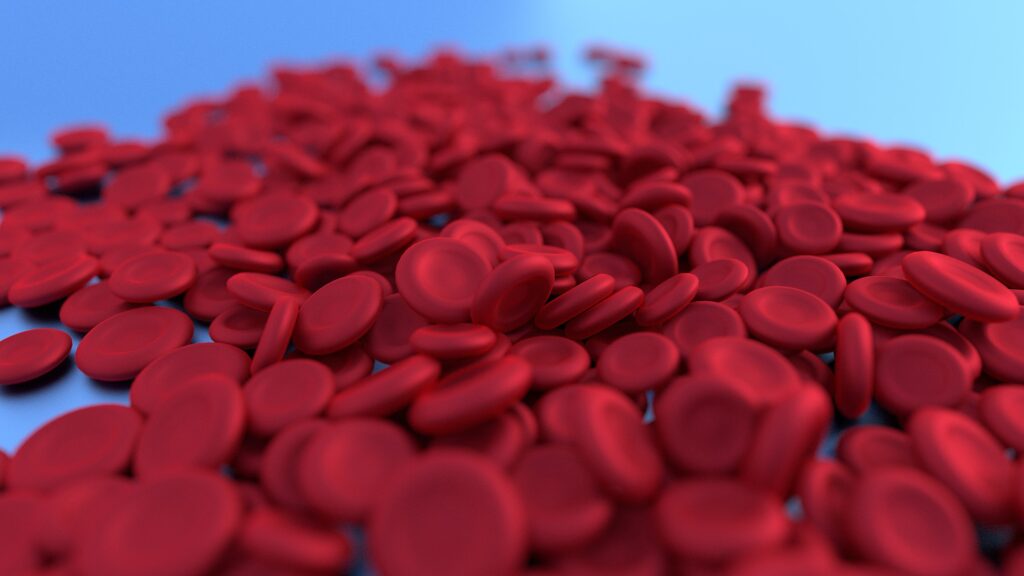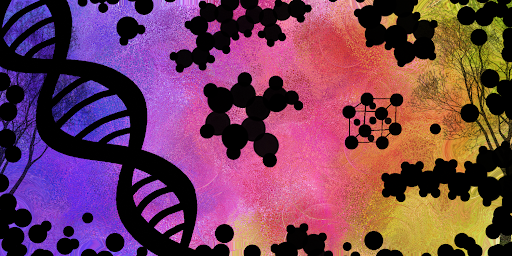Our body is a complex structure composed of various elements and molecules. One of our building blocks is iron—a fantastic metal that helps us breathe. It is essential to many biochemical processes and inhibits many neurodegenerative disorders.
Iron is the fourth most common element on Earth and it is usually found as metal. However, in our body, it must take a suitable form. In its ionic version, iron can bind to macromolecules, such as enzymes and proteins. An essential molecule containing iron is hemoglobin, specialized in transporting oxygen (O2) from the lungs to the soft tissues needed for cellular respiration. It is found in red blood cells, which gives them their characteristic deep red color.

Another fundamental molecule with iron is myoglobin, present in the muscles. It works as a local oxygen reservoir that can temporarily deliver oxygen when it is short in the blood, especially during an insufficient or intense muscular activity like exercises.
How our body takes care of iron
Absorption. Iron is mainly absorbed in the small intestine, especially in the duodenum, which connects the stomach with the following part of the small intestine. Then, the iron is transported to the blood thanks to a unique protein in our body called transferrin, which carries the iron quickly and effectively.
Homeostasis. The hormone hepcidin, secreted by the liver, facilitates maintaining the optimal iron level in our plasma.
Storage. The bone marrow, the liver, and the spleen store iron through a protein called ferritin.
Excess of iron can be harmful
Excess of iron leads to the generation of free radicals, highly unstable and reactive molecules that can seriously damage the cells of our body.
Iron is a heavy metal, so its overdose can be dangerous. When we overtake it, this element inhibits the zinc absorption that is also needed in biochemical processes taking place in the organism. When too much iron is supplemented, the body stores it leading to severe health problems including affliction of the hormonal system, diabetes, and associated complications, arthritis, osteoarthritis, and much more.
The consumption of iron supplements by people with iron deficiency leads to its accumulation in the body and, consequently, to diseases like liver damage. In addition, too high iron levels due to too much supplementation may reduce the amount of zinc absorbed. That does not happen when consuming iron-rich foods.
Iron deficiency
In contrast, if present in insufficient quantities, it can cause a general feeling of tiredness, paleness in the face, or headaches. Iron is needed for the proper functioning of many biochemical processes. For example, iron helps the heme enzyme catalase, which works as an antioxidant, to break hydrogen peroxide to obtain water. Too low levels of this protecting molecule lead to the liberation of free radicals that can damage DNA, RNA, lipids, and proteins.
Iron is needed for the excellent condition of our memory and learning processes. Its deficiency affects brain development; it promotes the development of Parkinson’s disease, Alzheimer’s disease, Huntington disease, and Friedreich ataxia.
It is worth stressing that hemoglobin can also bind and transport other molecules such as nitric oxide (NO), carbon monoxide (CO), and cyanide ion (CN–). Carbon monoxide and cyanide are very toxic molecules because they can bind to iron almost irreversibly, preventing the standard binding of oxygen and its transport to the tissues. In other words, they just block the hemoglobin, making it impossible to transport oxygen. Incidents of carbon monoxide poisoning are pretty recent and can be caused by malfunctioning stoves or a clogged chimney: the air in the apartment can become saturated with carbon monoxide causing death by suffocation.
Who is at risk of iron deficiency?
Several groups should be conscientious about their iron absorption and excretion. The first one is people who are in their growth phase. Children and teenagers should include iron-rich foods in their diet. The next group is women of reproductive age. The reason is that they are losing some amounts of blood during menstruation, which is correlated with iron deficiency.
During pregnancy, it is vital for women to maintain optimal iron supplementation. That is because that element plays an essential role in fetus and placenta formation. It is crucial during the last ten weeks when the child begins to build its iron stores ready for the first six months of life.
Even a healthy diet does not guarantee the correct iron level in the blood. For example, nuts, legumes, seeds, and soybeans contain natural chemicals called phytates that interfere with iron absorption in food.
The consumption of iron supplements by people with iron deficiency leads to its accumulation in the body and, consequently, to diseases like liver damage. In addition, too high iron levels due to too much supplementation may reduce the amount of zinc absorbed. That does not happen when consuming iron-rich foods.
Iron is an essential element for blood production and oxygen transport through the whole body. It plays a vital role in many biochemical processes, including DNA synthesis. We should be aware of the development of serious diseases like anemia or diabetes caused by its deficiency or overload. Clinicians meet with those diseases daily. Too low iron levels are dangerous but too high is even more so. It is worth taking care of its correct level.
References
Fretham, S. J. B., Carlson, E. S., Georgieff, M. K. (2011). The Role of Iron in Learning and Memory, Advances in Nutrition 2(2),112–121. DOI: 10.3945/an.110.000190
Berg, D.,Youdim, M. (2006). Role of Iron in Neurodegenerative Disorders, Topics in Magnetic Resonance Imaging 17(1), 5–17. DOI: 10.1097/01.rmr.0000245461.90406.ad
Medical News – https://www.medicalnewstoday.com/articles/166455#complications (accessed 13.12.2021)
Abbaspour, N., Hurrell, R., Kelishadi, R. (2014). Review on iron and its importance for human health. J Res Med Sci. 19(2),164–74.
Lauren, C. R., Christopher, V. C. (2015). Review of Iron Supplementation and Fortification, Topics in Public Health. IntechOpen 8, 176–195. DOI: 10.5772/58987
McLaren, G. D., Muir, W. A., Kellermeyer, R. W., Jacobs, A. (1983). Iron Overload Disorders: Natural History, Pathogenesis, Diagnosis, and Therapy, CRC Critical Reviews in Clinical Laboratory Sciences 19(3), 205–266, DOI: 10.3109/10408368309165764
Studio Lindalu http://studiolindalu.com/scientific-visualization/colours_of_blood (accessed 13.11.2021)
Animalhow https://animalhow.com/animals-blue-green-white-yellow-blood-color/ (accessed 13.12.2021)
Luo, H., Zeng, Y., He, D., Pan, X. (2021). Application of iron-based materials in heterogeneous advanced oxidation processes for wastewater treatment: A review, Chemical Engineering Journal 407, 127191. DOI: 10.1016/j.cej.2020.127191
Man, Y., Xu, T., Adhikari, B., Zhou, C., Wang Y., Wang, B. (2021). Iron supplementation and iron-fortified foods: a review, Critical Reviews in Food Science and Nutrition, DOI: 10.1080/10408398.2021.1876623.
This article is a joint work of Martina Mercurio (Chemistry Department at Sapienza University of Rome), Igor Jaszczyszyn (Medical University of Warsaw), Agnieszka Pregowska (Institute of the Fundamental Technological Research, Polish Academy of Sciences), and Magdalena Osial (Faculty of Chemistry, University of Warsaw; and Institute of the Fundamental Technological Research, Polish Academy of Sciences) as a part of the Science Embassy project.
Featured illustration by Magdalena Osial.



